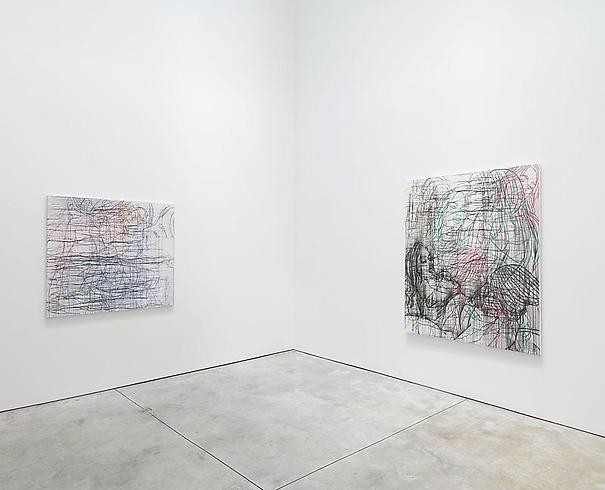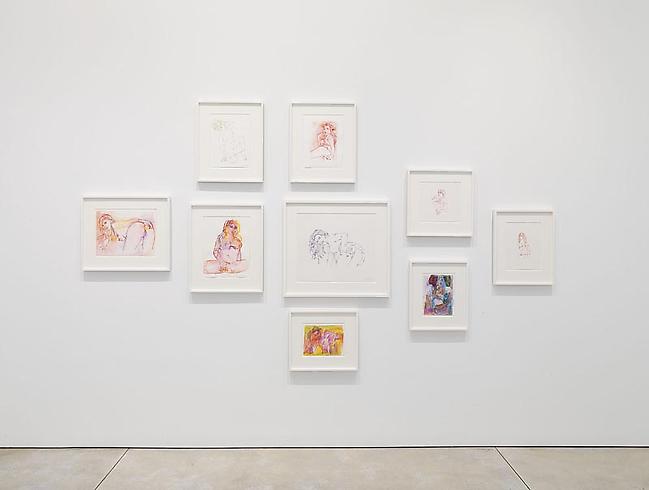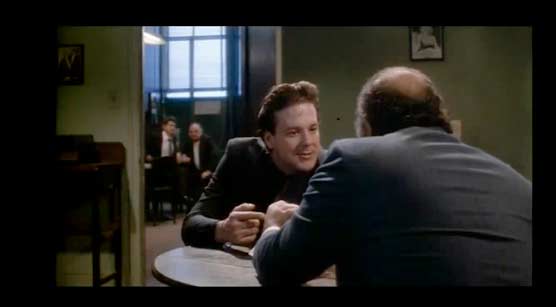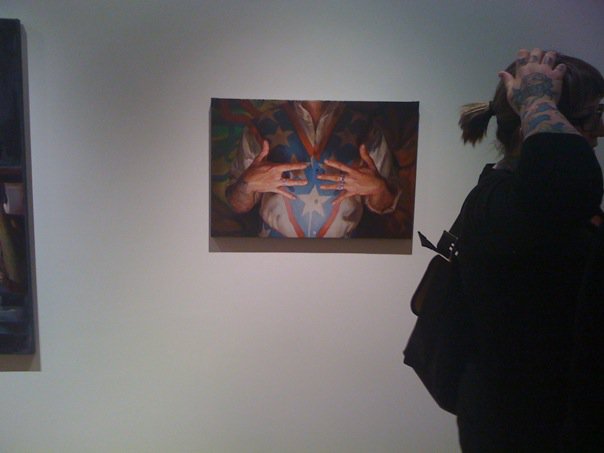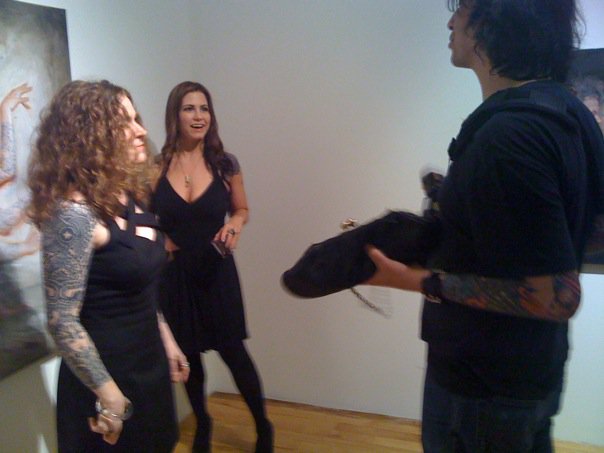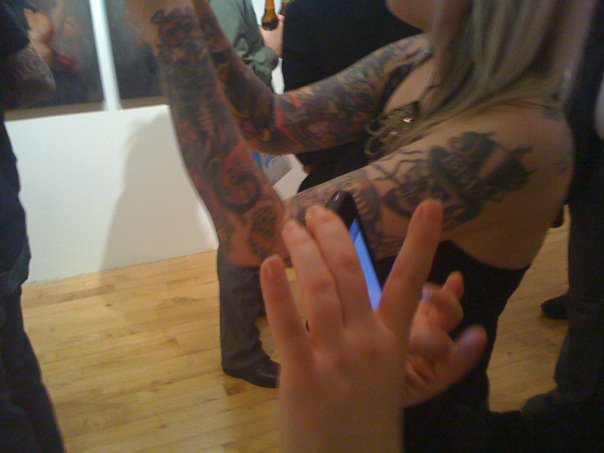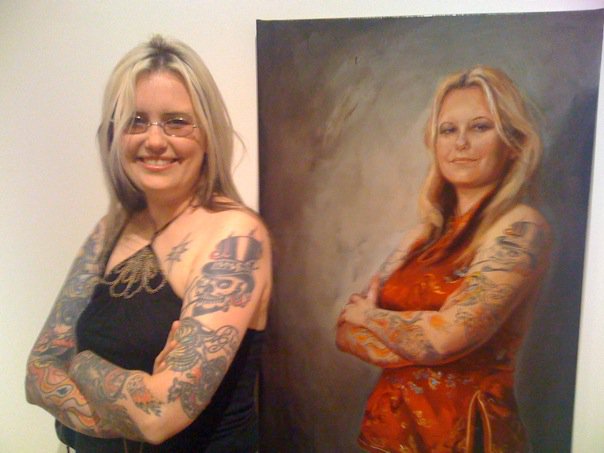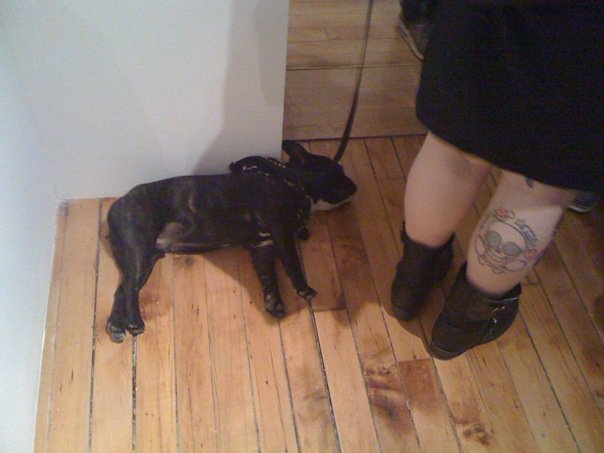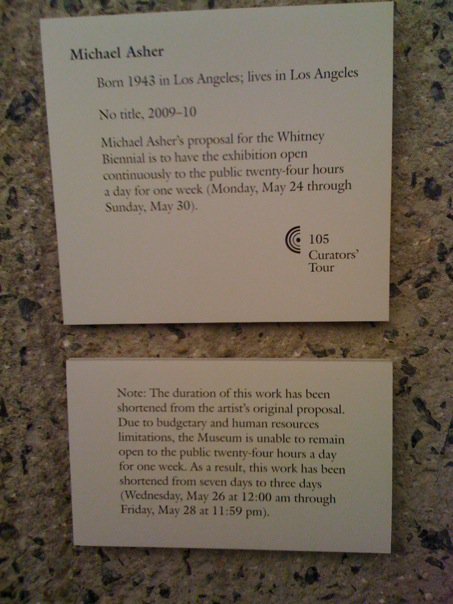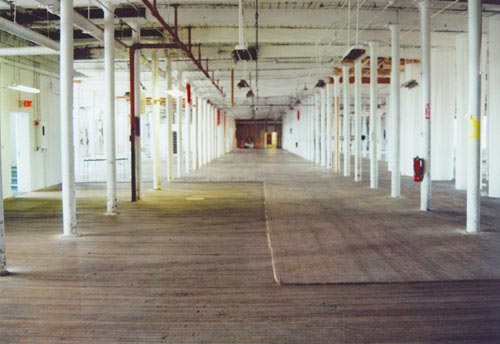beaux-arts


{ Frank Lloyd Wright, Johnson Wax Building, Wisconsin, 1936-1944 | Main room with lily-pad columns | more photos }
The construction of the Johnson Wax building created controversies for the architect. In the Great Workroom, the dendriform columns are 9 inches (23 cm) in diameter at the bottom and 18 feet (550 cm) in diameter at the top, on a wide, round platform that Wright termed, the “lily pad.” This difference in diameter between the bottom and top of the column did not accord with building codes at the time. Building inspectors required that a test column be built and loaded with twelve tons of material. The test column, once it was built, was tough enough that it was able to be loaded fivefold with sixty tons of materials before the “calyx”, or part of the column that meets the lily pad, cracked (crashing the 60 tons of materials to the ground, and bursting a water main 30 feet underground). After this demonstration, Wright was given his building permit.
{ Johnson Wax Headquarters | Wikipedia | Continue reading }
related:
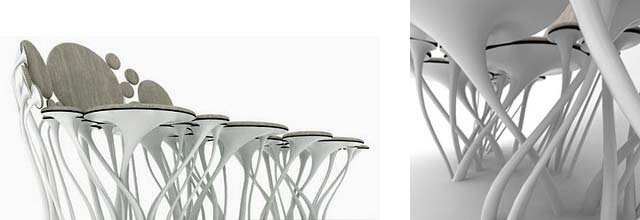
{ Bench by Kois Associated Architects | more }
architecture, visual design | May 20th, 2010 7:47 am
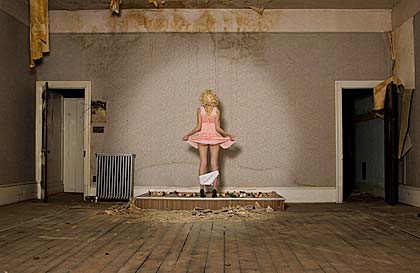
New research shows a possible explanation for the link between mental health and creativity. By studying receptors in the brain, researchers at the Swedish medical university Karolinska Institutet have managed to show that the dopamine system in healthy, highly creative people is similar in some respects to that seen in people with schizophrenia.
High creative skills have been shown to be somewhat more common in people who have mental illness in the family. Creativity is also linked to a slightly higher risk of schizophrenia and bipolar disorder. Certain psychological traits, such as the ability to make unusual pr bizarre associations are also shared by schizophrenics and healthy, highly creative people. And now the correlation between creativity and mental health has scientific backing.
{ EurekAlert | Continue reading }
photo { Alison Brady }
beaux-arts, brain, ideas, psychology, science | May 19th, 2010 7:45 pm
art, guide, new york | May 18th, 2010 8:07 am

{ Mark Rothko, No.14, 1960 | Unrelated: A way of reconstructing randomly scattered images allows pictures to be transmitted through opaque objects. | How to take photographs through opaque objects | full story }
art, photogs, science, technology | May 13th, 2010 2:13 pm
art, new york, video | May 12th, 2010 11:00 am



Small Change is an album by Tom Waits, released in 1976 on Asylum Records. It was recorded, direct to 2-track stereo tape, from July 15 to July 20, 1976 at the Wally Heider Recording Studio, in Hollywood, USA under the production of Bones Howe.
At the time of the recording of Small Change Waits was drinking more and more heavily, and life on the road was starting to take its toll on him. Waits, looking back at the period said: “I was sick through that whole period […] It was starting to wear on me, all the touring. I’d been travelling quite a bit, living in hotels, eating bad food, drinking a lot - too much. There’s a lifestyle that’s there before you arrive and you’re introduced to it. It’s unavoidable.”
With the album Waits asserted that he “tried to resolve a few things as far as this cocktail-lounge, maudlin, crying-in-your-beer image that I have. There ain’t nothin’ funny about a drunk […] I was really starting to believe that there was something amusing and wonderfully American about being a drunk. I ended up telling myself to cut that shit out.”
{ Wikipedia | Continue reading }
photos { Joel Brodsky }
food, drinks, restaurants, music, photogs | May 12th, 2010 8:57 am
music | May 12th, 2010 8:20 am
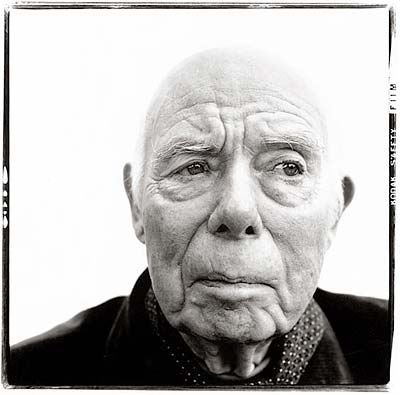
This is evident in the element of chance and randomness inserted into design by painters like Arp and Pollock, but, beyond that, it is evident in the larger urge, shared by poets and writers, to make a career of violations, risks, wagers. Gauguin is the original of the type, of whom Picasso is the most famous realization, of the artist as gambler–the solitary risk-taker, indifferent to anyone’s welfare but his own and therefore capable of acts of independence and originality unknown to timid, orderly, nice people, acts that thrill and inspire new acts a century later. It is the goal of that kind of modern artist to run the red light and hit the old ladies–the old ladies of custom and convention. Where art since the Renaissance had attempted to limit luck in a system of inherited purpose and patterns, modern art demands that you press the pedal as hard as you can, and pray.
{ Excerpted by Daniel from The New Yorker }
photo { Jean Renoir by Richard Avedon, 1972 }
art, beaux-arts, ideas | May 11th, 2010 4:25 pm
music | May 6th, 2010 12:20 am

Imagine a market for highly sought-after items in which the makers and sellers work hard to ensure that the items go only to certain buyers, even if other buyers might be willing to pay more. The favored buyers are then expected not to resell the items for many years, even if the values skyrocket. Ideally, in fact, the buyers are expected to give these items away eventually, for the public good. And if the buyers don’t abide by these expectations, they risk being cut off, cast out with the other unwashed wealthy who can afford to buy but have no access.
At least according to Craig Robins, a prominent Miami art collector and real estate developer who filed a federal lawsuit on March 29 in Manhattan, this is a portrait of the workings of the primary market for contemporary art, which, despite the recession, remains immense and highly competitive.
At its heart, the $8 million suit is a fairly ordinary contract dispute about confidentiality agreements and sales promises. But the details of the disagreement have provided a rare view into a normally very private world of high-end art selling in which membership rules, responsibilities, rewards and reprisals can be so complex and changeable that even art world veterans say they sometimes struggle to decode them.
{ NYTimes | Continue reading }
Days after the sabotage, one of his best-known older pieces, a suspended, taxidermised horse titled The Ballad of Trotsky, was auctioned in New York for $2.1m (£1.15m). Cattelan claims he won’t get a penny of that money - he sold the horse in 1996 for $5,000. Still, what is it like knowing your work is worth so much? “It’s like going to sleep 14 years old and waking up 30,” he says. “Things that maybe seemed a joke before are now taken more seriously.”
{ The Guardian, 2004 | Continue reading }
related { The Strange caase of Maurizio Cattelan | The Economics }
photo { unsourced | via Willie }
Maurizio Cattelan, art, economics, horse, law | May 5th, 2010 9:38 am

A collection of paintings that have caused art aficionados to turn a deep shade of purple and have provoked upset and anger throughout the art world are to go on show.
The forged works include a fake Botticelli, which was bought for a higher price than a genuine work by the artist sold at the same time. A gallery director almost had to resign because of another one, a fake Holbein.
In an unprecedented spirit of public transparency (and perverse pride), the National Gallery in central London is dusting down its holdings of forged paintings, accidentally bought as genuine works, supposedly by Botticelli, Holbein and Durer, among others, and showing them off to the public.
Some experts within the gallery actually prefer the fakes to the real thing, they revealed yesterday. Rachel Billinge, a research associate in the gallery’s conservation department, said she sometimes looked upon the forgeries with more admiration than the works by their genuine counterparts. “Sometimes you can appreciate their techniques, and the effort they put in, more than the original that was churned out by a bored apprentice at a workshop,” she said.
The last known fake bought by the gallery was in the late 1950s, when it acquired a painting believed to be a genuine Rembrandt, An Old Man in an Armchair. Signed and dated falsely, many curators have marvelled at its extraordinary technique and artistic achievement.
{ The Independent | Continue reading }
art, economics, scams and heists, uh oh | May 5th, 2010 8:25 am
music | May 5th, 2010 7:22 am
art, new york, tattoos | April 29th, 2010 8:25 am
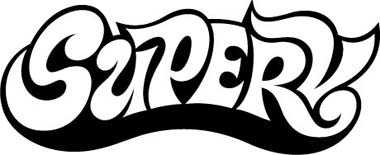
I bought a Stereo! Wow! With two speakers!
But then I heard the quad with the four speakers and I was like this is it, so I got rid of the stereo and got the quad.
I’m listening to this thing and I’m like “Hey this sounds like SHIT!”
So, I got rid of that and got the dodecaphonic with the 12 speakers.
This was more to my liking…for a while.
But the ear gets pretty sophisticated pretty fast and I got rid of that and got the milliphonic with the 1,000 speakers.
And I’m listening to that one and I’m like, “Hey, this sounds like SHIT too! The other one was SHIT one, this one is SHIT too!”
So, I traded that in and got the googlephonic, which is the highest number of speakers you can have before infinity.
Sounds like SHIT!
So, then I said, “Hey, maybe it’s the needle!”
I had the typical diamond needle. I searched around got the moonrock needle, cost me 3 million bucks, but what the hey. So, now I have a googlephonic stereo with a moonrock needle.
It’s okay for a car stereo, I wouldn’t want it in my house.
{ Steve Martin }
logotype { House Industries }
archives, haha, music, noise and signals | April 28th, 2010 11:20 am

Critics tend to declare that Marcel Duchamp’s urinal, entitled “Fountain”, is the most important artwork of the 20th century. Yet its standing as a collectable object has always lagged behind its value as an idea. The work questioned notions of authenticity when Duchamp first purchased the mass-produced plumbing fixture and signed it “R. Mutt” in 1917. Now, over 40 years after the artist’s death, the problem of legitimacy remains relevant as unauthorised urinals have been discovered circulating in Italy. The art world loves paradoxical conceptual gestures, but it seems that someone might be taking the piss.
“Fountain” was the first ready-made that Duchamp engineered for scandal. The artist was a member of the board of the Society of Independent Artists, whose exhibition had no jury and was set to be the largest in America. He knew that most people would perceive the work as a prank, particularly if submitted by an unknown Richard Mutt from Philadelphia. When the board duly voted against it, Duchamp and his chief patron, Walter Arensberg, resigned in protest—a story that was swiftly leaked to the New York papers.
The ready-made had its public debut a few weeks later in an art magazine called the Blind Man. A photo of the urinal by Alfred Stieglitz was published alongside the founding manifesto of conceptual art, which included the words: “Whether Mr Mutt with his own hands made the fountain or not has no importance. He CHOSE it.” The urinal then went the way of many of Duchamp’s early ready-mades; it was smashed or trashed. So insignificant was the porcelain pissoir at the time that no one can remember exactly what happened to it.
“Fountain” was not a coveted art object until well after the second world war, when Duchamp became a cult figure among Pop artists. In response to the art world’s desire to see his legendary lavatory, Duchamp authorised curators to purchase urinals in his name in 1950, 1953 and 1963. (The first is in the Philadelphia Museum of Art, the second is lost and the third sits in the Moderna Museet in Stockholm.) Then in 1964, in association with Arturo Schwarz, a Milan art dealer, historian and collector, the artist made the momentous decision to issue 12 replicas (an edition of eight with four proofs) of his most important ready-mades, including the urinal. Mr Schwarz, now 86, went on to write the artist’s catalogue raisonné—a scholarly book meant to document the complete works of Duchamp.
{ The Economics | Continue reading }
photo { Stephen Shore, New York City, New York,
September-October, 1972 }
art, flashback | April 22nd, 2010 6:50 am
art, economics, haha | April 21st, 2010 6:40 pm
art, visual design | April 21st, 2010 8:35 am
Although humans usually prefer mates that resemble themselves, mating preferences can vary with context. Stress has been shown to alter mating preferences in animals, but the effects of stress on human mating preferences are unknown. Here, we investigated whether stress alters men’s preference for self-resembling mates. (…) Our findings show that stress affects human mating preferences: unstressed individuals showed the expected preference for similar mates, but stressed individuals seem to prefer dissimilar mates.
{ Proceedings B of the Royal Society | Continue reading }
music, noise and signals, video, visual design | April 15th, 2010 7:16 am
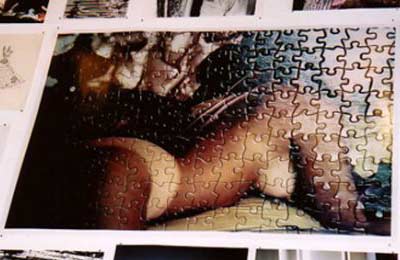
Religious architecture and art were to medieval feudalism what advertising and commercialism are to modern capitalism: A rather effective way to build support for the status quo using aesthetics instead of argument. My claim, in short, is that Notre Dame played the same role during the Middle Ages that fashion magazines play today. Notre Dame was not an argument for feudalism, and Elle is not an argument for capitalism. But both are powerful ways to make regular people buy into the system.
{ EconLog | Continue reading }
art, ideas | March 23rd, 2010 2:20 pm





